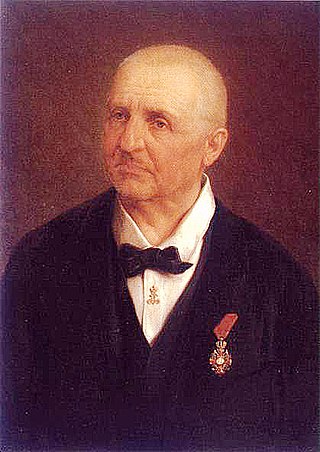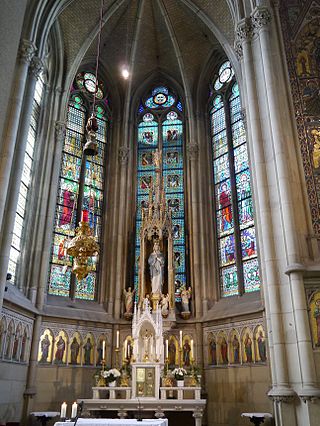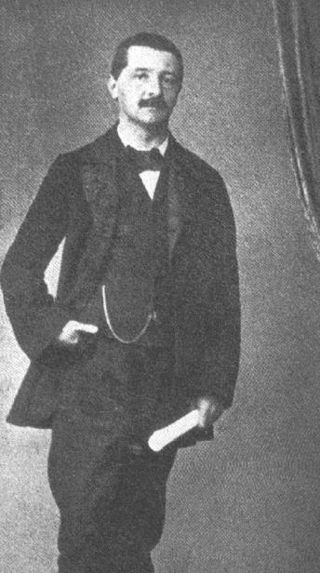The International Bruckner Society (German Internationale Bruckner-Gesellschaft) was an organization which began its existence in 1927 in Leipzig and was officially founded in 1929 in Vienna. Its main purpose since then has been to publish editions of the music of Anton Bruckner. Most of Bruckner's music had been published during the composer's lifetime or shortly after his death, but often in versions that incorporated numerous changes suggested by his friends and students. In the case of Bruckner's unfinished Ninth Symphony, Bruckner student Ferdinand Loewe made several unauthorized changes even after Bruckner's death. The mission of the International Bruckner Society was to publish versions of Bruckner's works based directly on the original manuscripts, which the composer had bequeathed to the Austrian National Library.
The Society hired Robert Haas as General Editor, with Alfred Orel as his assistant. The first publication was Orel's critical edition of the Ninth Symphony, published in 1934 but premiered two years earlier in 1932 in a concert by Siegmund von Hausegger conducting the Munich Philharmonic Orchestra. In this concert the Ninth Symphony was performed twice: once in the Loewe edition and again in the new Orel edition, and its success provided much impetus for a complete critical edition of Bruckner's work.
Between 1935 and 1944 Haas published editions of all the remaining numbered symphonies except for the Third (Haas's work on this symphony was destroyed in a wartime incident). In several cases, multiple revisions of a single symphony existed in the manuscripts, and Haas did not hesitate to combine material from different versions to produce what he considered an "ideal" version for publication (even though it did not correspond to anything actually written by the composer).
The Society had officially been dissolved in 1938 immediately after the Anschluss (although publication of the complete edition continued from Leipzig). After World War II the Society was refounded in Vienna. Haas was fired because of his Nazi connections and publication resumed under a new General Editor: Leopold Nowak. The first post-war publication was a critical edition of the Third Symphony, edited by Fritz Oeser. Nowak continued as General Editor until 1989, by which time the Society had published multiple versions of the symphonies and also numerous other works by Bruckner. Nowak was a more scholarly and less creative editor than Haas: he saw his task as reproducing all the different versions that Bruckner wrote on the basis of the manuscript and printed sources, and documenting all the differences in great detail. The post-war Nowak editions became more commonly performed and recorded than the pre-war Haas versions, although a significant number of conductors continued to prefer Haas.
The Society continued to produce new editions of Bruckner's works after Nowak stepped down. It also sponsors periodicals and scholarship dedicated to Bruckner.

Josef Anton Bruckner was an Austrian composer and organist best known for his symphonies and sacred music, which includes Masses, Te Deum and motets. The symphonies are considered emblematic of the final stage of Austro-German Romanticism because of their rich harmonic language, strongly polyphonic character, and considerable length. Bruckner's compositions helped to define contemporary musical radicalism, owing to their dissonances, unprepared modulations, and roving harmonies.
Leopold Nowak was an Austrian musicologist chiefly known for editing the works of Anton Bruckner for the International Bruckner Society. He reconstructed the original form of some of those works, most of which had been revised and edited many times.

Anton Bruckner's Symphony No. 5 in B-flat major WAB 105, was written in 1875–1876, with minor changes over the next two years. It came at a time of trouble and disillusion for the composer: a lawsuit, from which he was exonerated, and a reduction in salary. Dedicated to Karl von Stremayr, education minister in the Austro-Hungarian Empire, the symphony has at times been nicknamed the "Tragic", the "Church of Faith" or the "Pizzicato"; Bruckner himself referred to it as the "Fantastic" without applying this or any other name formally.

Robert Maria Haas was an Austrian musicologist.

Anton Bruckner's Symphony No. 7 in E major, WAB 107, is one of the composer's best-known symphonies. It was written between 1881 and 1883 and was revised in 1885. It is dedicated to Ludwig II of Bavaria. The premiere, given under Arthur Nikisch and the Gewandhaus Orchestra in the opera house at Leipzig on 30 December 1884, brought Bruckner the greatest success he had known in his life. The symphony is sometimes referred to as the "Lyric", though the appellation is not the composer's own, and is seldom used.

Anton Bruckner's Symphony No. 8 in C minor, WAB 108, is the last symphony the composer completed. It exists in two major versions of 1887 and 1890. It was premiered under conductor Hans Richter in 1892 at the Musikverein, Vienna. It is dedicated to the Emperor Franz Joseph I of Austria.

The Symphony No. 9 in D minor, WAB 109, is the last symphony on which Anton Bruckner worked, leaving the last movement incomplete at the time of his death in 1896; Bruckner dedicated it "to the beloved God". The symphony was premiered under Ferdinand Löwe in Vienna in 1903.

Anton Bruckner's Symphony No. 1 in C minor, WAB 101, was the first symphony the composer thought worthy of performing, and bequeathing to the Austrian National Library. Chronologically it comes after the Study Symphony in F minor and before the "nullified" Symphony in D minor. The composer gave it the nickname Das kecke Beserl, and conducted its 1868 premiere. Much later, after Bruckner was granted an honorary University of Vienna doctorate in 1891, he dedicated the 1890 version of the work to that institution.

Anton Bruckner's Symphony No. 2 in C minor, sometimes known as the "Symphony of Pauses", was completed in 1872. It was actually the fourth symphony composed by Bruckner, after the Symphony in F minor (1863), the Symphony No. 1 in C minor (1866), and the Symphony in D minor (1869).

Anton Bruckner's Symphony No. 3 in D minor, WAB 103, was dedicated to Richard Wagner and is sometimes known as his "Wagner Symphony". It was written in 1873, revised in 1877 and again in 1889.

Anton Bruckner's Symphony No. 4 in E-flat major, WAB 104, is one of the composer's most popular works. It was written in 1874 and revised several times through 1888. It was dedicated to Prince Konstantin of Hohenlohe-Schillingsfürst. It was premiered in 1881 by Hans Richter in Vienna to great acclaim.

Anton Bruckner's Symphony in F minor, WAB 99, was written in 1863, at the end of his study period in form and orchestration by Otto Kitzler.
Benjamin-Gunnar Cohrs is a German conductor, scholar, and publicist on music.

The Te Deum in C major, WAB 45, is a setting of the Te Deum hymn, composed by Anton Bruckner for SATB choir and soloists, orchestra, and organ ad libitum.

The Mass No. 3 in F minor, WAB 28, is a setting of the mass ordinary for vocal soloists, chorus and orchestra, and organ ad libitum, that Anton Bruckner composed in 1867–1868.

The Mass No. 2 in E minor, WAB 27 is a setting of the mass ordinary for eight-part mixed choir and fifteen wind instruments, that Anton Bruckner composed in 1866.

The Requiem in D minor, WAB 39, is a Missa pro defunctis composed by Anton Bruckner in 1849.

Anton Bruckner composed the Overture in G minor, WAB 98 in 1862–63, during his tuition by Otto Kitzler.
There have been many different versions and editions of the symphonies of Anton Bruckner.

The Bruckner Gesamtausgabe is a critical edition of the works of Anton Bruckner. Published by Musikwissenschaftlicher Verlag Wien in Vienna, it comprises three successive editions.









